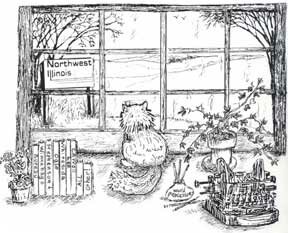
Discover rewarding casino experiences. 

Please Don't Quote Me PART III — Joseph O’Neal was twenty-seven years old when he died by hanging at the Carroll County Courthouse on May 16, 1873. He’d been born at Steubenville, Ohio but came west with his family during the Civil War to Chicago, then to Clinton, Iowa. |
When offered ministrations of a preacher while in jail, O’Neal claimed he was Methodist but the experienced Sheriff Sutton knew otherwise. Arrangements were made for two Catholic priests from Shannon, Fathers Stack and Barlof. Their opening prayer were immediately repeated in synchronicity by the prisoner. They visited the jail in the morning of the execution as O’Neal clutched a crucifix to his chest alternately sobbing and taking deep breaths to calm himself. He repeatedly had said, “He’d die like a man.” In those last hours he reiterated that his brother, Tommy, the Dwarf, was innocent of any complicity in the murder of Hiram Rexford. He had written a letter, it published in newspapers of that fact. And gave impassioned testimony about it. But some sort of legal machinations had brought Tommy O’Neal to trial for whatever reasons and he was found guilty, receiving a sentence of fifteen years. For whatever events, a second trial took place immediately following the first, with the same verdict but the sentence was reduced by one year, fourteen years. We couldn’t interpret the idea. Testimony at Joseph’s trial included the eyewitness account of Adele Clark. The prosecuting attorneys had been Volney Armor and David McCartney, both states’ attorneys of Carroll and Whiteside Counties respectively. At the hanging, Armor asked to be excused from witnessing the event which was given. About fifty witnesses were allowed in the board stockade built on the north side of the old courthouse to shield the hanging from the general public. Of those fifty were nine respected citizens, county clerk and circuit clerk representatives, etc. Despite the stockade’s blocking the view, vast crowds came from everywhere to see what they could see. The roofs of the buildings and houses surrounding the courthouse square were black with onlookers hoping from some macabre event to satisfy their curiosity. The streets were thick with horse and buggy. The photo here is taken from the 1968 Carroll County history. It shows the north side of the square with its new fence that, in this case, helped keep back the crowds. Journalists from the county’s weeklies and nearby were there to report for their readers and, as well, there were two from Chicago newspapers, the “Times” and “Interocean.” Also two local doctors, L.M. Greeley and L.L. Hostetter. During the incarceration of O’Neal (or O’Neil) in Carroll County, he regularly received visitors including his brother, John, who the day of the execution sobbed and groaned so loudly, report said, that it “filled the gloomy building.” A barber had come early to shape his hair and give him a clean shave. He looked nearly respectable. O’Neal’s mother came for her last visit with her recalcitrant son! She vowed loudly that she would seek revenge on Whiteside County’s sheriff, Worrell for his capturing and arresting her child. This statement gives us a clue to the hot temper Joe had. The two priests entered the jail cell about ten o’clock to say a few compassionate words to the condemned man. Deputies, the sheriff came and went also. Fresh clothing was brought; striped tweed trousers, a jacket and a collarless shirt! ($12 on the expense sheet). In February/March of 1991 a more completely detailed series of five was written concerning this event. This summary gives the highlights. It tells a little of the genuine reality show what real history is ... Right around home ... Real people, real emotions and should make us realize that in all generations there were emotional as well as mental and physical energies expended. One could hardly imagine what the sheriffs, the immediate witnesses felt in the months after the event. The deputy who came from his Last Walk, brushed at the shoulders of his jacket to straighten them, then nudged him towards the door. The entourage made its way to the outside. The bright May sunshine blinded O’Neal who’d been kept in the darkened jail cell for a week or more after being brought from Whiteside. As they edged their way forward, one of the witnesses in the stockade, A.S. McKindly called to the condemned man, “I’ll take your body to your mother tonight, Joe.” Joe nodded his thanks. Fred Dutcher, the defense attorney, whispered as he passed, “Farewell, Joe.” He murmured “Good-bye.” It was a steep climb to the gallows platform where awaited the sheriff and the two priests who embraced Joe on his arrival. They performed the Last Rites, then stepped back, nearly overcome with emotion. A deputy pinioned Joe’s hands and feet with rope. The sheriff, his lips moving but quietly no one knew that he spoke, pulled the black hood carefully over the head of the condemned man, straightening it. He’d taken his hand in his own, a sometime tradition, it was believed, but a humane gesture at any time. The sheriff had moved purposefully and quickly but not hastily. He, too, stepped back and checked the simple apparatus that would open the trap door on which O’Neal stood. Sutton, seeing all was ready, pulled the lever. Expecting results a thud, the silky whisper of the rope paying out, there was silence. The door hadn’t opened. Then a gasp or two, was there a moan? The sheriff barely moved his foot, then stomped hard at the door, knowing the bolt had released but for some reason the door had stuck. The thud of his foot echoed over the hills of the county seat. The body fell, the knot in the noose breaking the neck of Joseph O’Neal. The body slowly turned at its end. After a few minutes the two doctors felt his pulse ... Still strong. Five minutes, more minutes. It was weaker. Then they applied a small thermometer to the man’s chest. Not until a half hour’s time had passed would they declare him dead. Everyone still waited an unknown length of time to be certain, Joseph O’Neal was cut from the noose and laid in a simple coffin shoved under the gallow’s platform. (Coffin-S and J. Stakemiller - $12.75.) The ropes from his hands were cut, his arms laid across his chest. Mrs. Sheriff Sutton quietly advanced to lay a posy of daisies and pansies, other spring wildflowers in the coffin, a feminine gesture that certainly caused sob and choke of emotion. The coffin was nailed shut and covered with a shroud to further shield it from curiosity seekers. It was carried to the jail area until the evening when Mr. McKindly would take it to Fulton from where it would be ferried to Clinton for burial. One newspaper editor had written, “No doubt the verdict was just and the cost well worth the price.” No one knows, however, what emotional price was paid. But certainly the Keeper of the Great Book of Records had written in bold letters that Joseph O’Neal should be punished for his brutal crime. Why else did Sheriff Worrel step into the street to stop an anonymous carriage which turned out to be O’Neal if it wasn’t Fate that he be captured? Why, too, did Sheriff Sutton go into O’Neal’s jail cell the day before the execution to find a nine foot long tunnel dug from the jail almost to the outside, if it wasn’t meant to be? And the jury deliberated only an hour before bringing in a guilty verdict. O’Neal had spent the short time in the Carroll County jail digging the tunnel with hands and a tin drinking cup, hiding the dirt under the bunk on the wall. Only a little remained for him to remove and he could have escaped. Sutton’s instincts, like Worrell’s had led them to satisfy their inklings. Who knows what other crimes O’Neal might have committed had he escaped? Today such experience is called “profiling!”
In August of 1873 the Whiteside County Board of Supervisors went over the debit bill for the Change of Venue from Carroll County, noting even the several minor details listed such as 50¢ to Grove and Son druggists for medicine for Adlee Clark, the eyewitness to the killing. Further entries were found to the amount of $10.75 because as Dr. Hostetter had noted, the stress of reliving the event had taken its emotional toll. Besides the medication, liquor had been prescribed! Hostetter received an additional $12.50 for the treatment. Other charges have been listed throughout. Those charges connected those people to the event for business reasons but emotional, too. All in all the Change of Venue bill that Whiteside County paid was $1,567.95, and as the editor had said, well worth the price!!! Next year were the two poplar trees replaced that had died because, as the saying said, “Where the gallows show, no tree will grow?”
|




